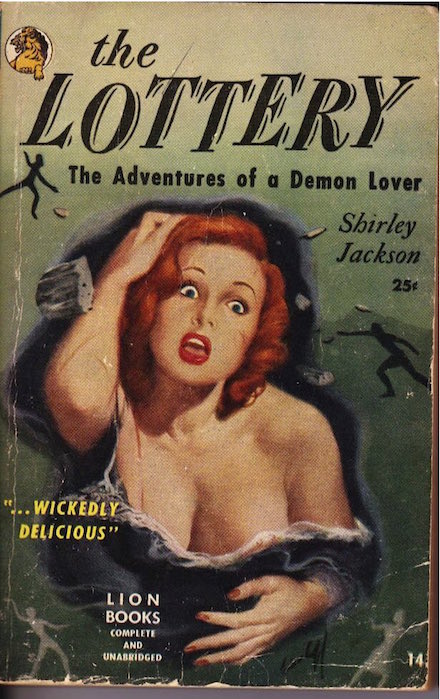Arthur Eggers was gassed in California on this date in 1948.
He had murdered his wife in December 1945, using his carpenter’s tools to saw off her head and hands to complicate identification. Although this gambit didn’t work, there was no clear motive or physical evidence to tie Eggers to the crime and he might have skated had he not put his used car up for sale a week later. It was bought by a sheriff’s deputy, who promptly found Dorothy Eggers’s blood in the boot. As it emerged, it seems to have been a crime borne from sexual rage, as the vivacious Dorothy apparently slept around and/or ridiculed Arthur’s impotence.
Eggers’s death warrant carried the signature of California Gov. Earl Warren, who at this moment was just a couple of weeks out from coasting to the White House as the Vice Presidential nominee on the Republican ticket. The ticket-topper Thomas Dewey was comfortably outpolling unpopular incumbent Harry S Truman, and merely running out the clock to a comfortable win universally anticipated by pundits.
Well actually, it turned out that Earl Warren would be cooling his heels in Sacramento for five more years.
Warren is an intriguing figure for our site‘s interests, for a couple of reasons.
Most obvious to U.S. readers is his 16-year stint as the U.S. Supreme Court’s Chief Justice. He was a liberal Republican, a once-numerous species subsequently hunted to extinction, and his tenure atop the “Warren Court” is synonymous with postwar liberal jurisprudence that has been anathema to his former party ever since. Warren retired in 1969 prior to the decision, but the landmark 1972 Furman v. Georgia rulng invalidating then-existing death penalty statutes is a legacy of that same epoch; even before Warren’s own departure from the court a nationwide death penalty moratorium had settled in, in anticipation of the federal bench sorting out whether the death penalty could continue to exist at all. (Warren died in 1974, so he never saw the triumphant return of capital punishment.) Beyond the specific issue of the death penalty, Warren’s court greatly strengthened the due process rights of accused criminals with consequences for every criminal prosecution down to the preseent day: it is this period that gives us the Miranda warning (“you have the right to remain silent …”), the right to an attorney for indigent defendants, and prohibitions on using evidence obtained by dodgy searches.
But we can also view Warren the Vice Presidential candidate as an oddity.
While we’ve dwelt here upon the rich death penalty history of U.S. Presidents, our future liberal legal lion appears to be the most recent Vice-Presidential nominee for either of the two major parties to have sent men to an executioner, at least a judicial one. For whatever reason, the VP bids subsequently have tended towards products of Congress rather than the governors’ mansions where the life-and-death calls get made; there’s an exception in 1968, when both Spiro Agnew (Republican) and Edmund Muskie (Democrat) had been governors … but Agnew was the brand-new governor of Maryland during the Warren Court’s aforementioned death penalty moratorium, and Muskie the previous governor of Maine, which abolished capital punishment in the 19th century. The sitting Vice President as of this writing, Mike Pence, would kill a human as easily as a fly, but no death cases reached his desk during his 2013-2017 spin as Governor of Indiana: ongoing wrangling over the availability and constitutionality of various lethal injection drugs has sidelined the Hoosier headsman for the best part of a decade.
On this day..
- 1794: Robert Watt, British Conventioner - 2019
- 1660: John Carew, regicide - 2018
- 1767: Tom, slave of the Baylor family - 2017
- 1937: Panfiliya Tanailidi, Azerbaijani actress - 2016
- 1651: James Stanley, Earl of Derby - 2015
- 1942: Coastwatchers on Tarawa - 2014
- 1940: Lluis Companys, Catalan president - 2013
- 2012: Eric Robert, determined volunteer - 2012
- 1964: Nguyen Van Troi, Viet Cong urban guerrilla - 2011
- 1942: Three Doolittle raiders - 2010
- 1896: Rainandriamampandry and Prince Ratsimamanga - 2009
- 1917: Mata Hari, femme fatale - 2008
- Themed Set: Belles Epoque - 2008


 Wealthy and well-connected, Ades could have done for the poster child of Jewish assimilation in Iraq — a fact that made him exceptionally well-suited to become the unwilling star of a show trial. (Ades realized it too late, spurning advice to flee the country in the mistaken belief that he had too much pull for the fate that befell him.)
Wealthy and well-connected, Ades could have done for the poster child of Jewish assimilation in Iraq — a fact that made him exceptionally well-suited to become the unwilling star of a show trial. (Ades realized it too late, spurning advice to flee the country in the mistaken belief that he had too much pull for the fate that befell him.) With impeccable timing she exited a life of proletarian obscurity by applying for a gig as a camp warden in July 1944, right when the Third Reich’s prospects for surviving the war went terminal.
With impeccable timing she exited a life of proletarian obscurity by applying for a gig as a camp warden in July 1944, right when the Third Reich’s prospects for surviving the war went terminal. Arrested by the Gestapo in December 1943,
Arrested by the Gestapo in December 1943, 

 This execution occurred during a short truce punctuating Israel’s
This execution occurred during a short truce punctuating Israel’s 


